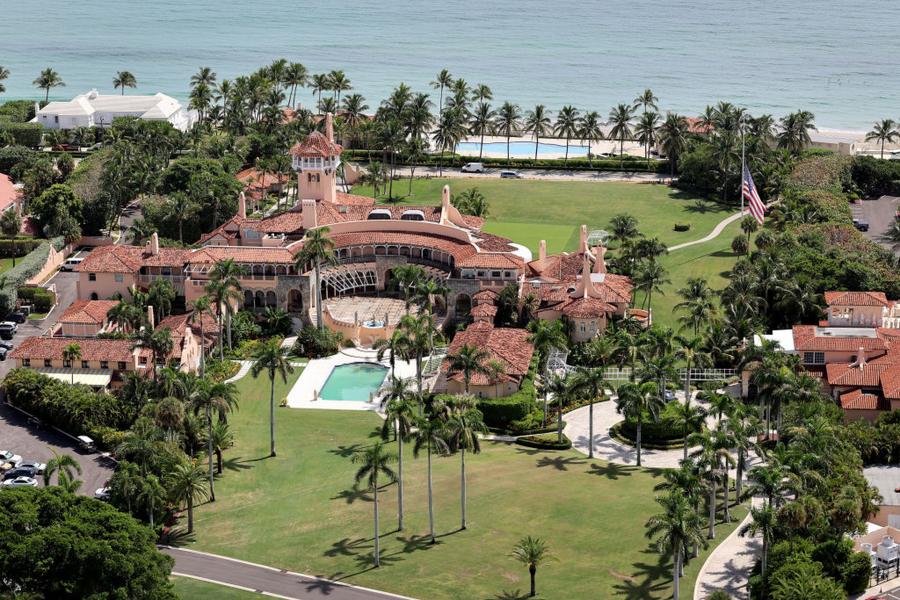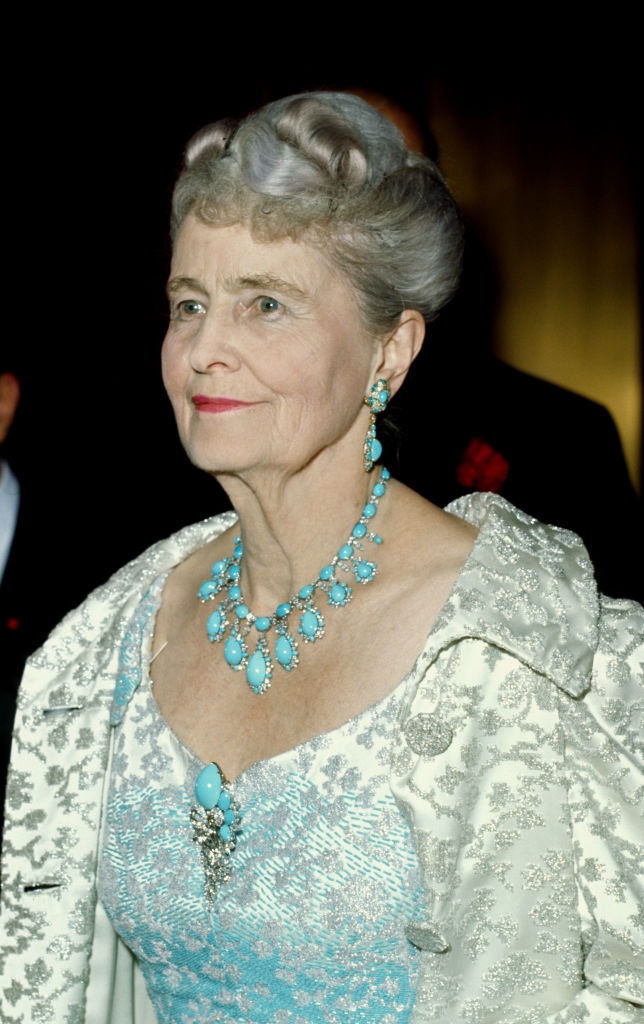What was Marjorie Merriweather Post's net worth?
Marjorie Merriweather Post was an American businesswoman and socialite who had a net worth of $200 million at the time of her death in 1973. That's the same as an inflation-adjusted $1.5 billion. Marjorie Merriweather Post was born in Springfield, Illinois, in March 1887. She died in September 1973. She was the owner of General Foods, Inc.
Marjorie was the daughter of Charles William. "C.W." Post, the founder of Postum Cereal Company. When her father died in 1914, she inherited $20 million. That's the same as around $500 million in today's inflation-adjusted dollars. Upon her father's death, she took control of the family cereal empire. Over the next several decades, she drastically increased the company's fortunes through strategic growth and acquisitions that eventually became the General Foods Corporation. She was the richest woman in the United States and one of the richest women in the world for much of her adult life. When she died in 1973, Marjorie left behind a $200 million estate, equal to $1.5 billion today. General Foods was acquired in 1985 by Philip Morris for $5.6 billion. It was the world's largest non-oil acquisition of all time up to that point. That record was broken in 1988 when Philip Morris acquired Kraft Foods Inc. for $12.9 billion. Philip Morris then merged General Foods and Kraft, and called the combined company Kraft Foods, Inc.
Beyond her business acumen, Post was renowned as a distinguished collector of fine art and jewelry, a noted philanthropist, and a socialite whose homes, particularly Mar-a-Lago in Palm Beach, set new standards for American luxury living.
Early Life
Born on March 15, 1887, in Springfield, Illinois, to C.W. Post and Ella Letitia Merriweather, Marjorie spent her early years in the heartland of America. The family lived at 1 Post Circle in Battle Creek, Michigan, where her father established his growing cereal business. As an only child, young Marjorie was groomed from an early age to take over the family's Postum Cereal Company, which her father had founded after developing Postum, a coffee substitute, and later Grape-Nuts cereal. She received extensive education in business management alongside traditional schooling at Mount Vernon Seminary and College in Washington, D.C. Her father made sure she learned every aspect of the family business, often taking her to business meetings and teaching her about food production, marketing, and distribution. She took this hands-on education seriously, spending time on the factory floor learning the manufacturing processes and sitting in on important business discussions from a young age.

Getty
General Foods
Upon her father's death in 1914, Post inherited the Postum Cereal Company at age 27 and immediately demonstrated her business prowess. Working with her second husband, E.F. Hutton, she began acquiring other food companies and brands. In 1925, she oversaw the acquisition of Jell-O, Maxwell House Coffee, and other well-known food brands. These strategic moves led to the creation of the General Foods Corporation in 1929, establishing one of America's largest food manufacturing companies. Under her leadership, General Foods pioneered many modern food processing and marketing techniques.
Richest Woman in the United States
By the 1930s, Post had become the richest woman in the United States, with a fortune that would be worth billions in today's dollars. Her wealth came not only from her inheritance but from her astute business decisions and investments. She managed her fortune carefully, diversifying into real estate and other ventures while maintaining her controlling interest in General Foods. Her business success was particularly noteworthy during an era when few women held positions of corporate power.
Jewelry & Art Collection
Post amassed one of the most significant collections of Russian imperial art outside of Russia, including Fabergé eggs, religious objects, and decorative arts. Her jewelry collection was equally impressive, featuring historic pieces such as the Napoleon Diamond Necklace and the Marie Louise Diadem. She had an exceptional eye for quality and historical significance, often purchasing pieces that had belonged to royal families and aristocrats. Many of these collections were later donated to museums, with a significant portion going to the Smithsonian Institution.

Mar-a-Lago (Photo by Joe Raedle/Getty Images)
Mar-a-Lago
In 1927, Post commissioned the construction of what became a 128-room mansion on 17 acres in Palm Beach, Florida. She named the estate Mar-a-Lago, which means "Sea to Lake" in Spanish.
She spent $7 million in 1920s dollars constructing the mansion. That's the same as $101 million in today's inflation-adjusted dollars. Upon her death in 1973, Post donated the 17-acre estate to the United States Government, hoping it would be used as a Winter White House. The Federal government soon realized the cost of maintaining such a property was enormous and decided to decline the gift. The Post Foundation attempted to sell the property in 1981 for $20 million, the same as $56 million in today's dollars. Post's daughters did not maintain the property at all, and it quickly fell into disrepair. In 1985, Donald Trump initially offered to buy Mar-a-Lago for $15 million. After his offer was declined, he bought the oceanfront land immediately in front of the estate for $2 million from the one-time owner of Kentucky Fried Chicken. He then threatened to build a massive mansion that would block Mar-a-Lago's views. The threat caused interest in the property to plummet and he was able to purchase Mar-a-Lago later that year for $7 million.

(Photo by Santi Visalli/Getty Images)
Other Real Estate
Beyond Mar-a-Lago, Post owned several other remarkable properties. Camp Topridge in the Adirondacks was her rustic retreat, though "rustic" meant something different to Post – the camp featured 68 buildings and required 85 staff members to maintain. She also owned Hillwood Estate in Washington, D.C., which she purchased in 1955 and filled with her extensive Russian art collection. Her Sea Cloud, at the time the largest privately owned sea-going yacht in the world, was essentially a floating mansion that she used for many years.
Personal Life, Philanthropy and Death
Post's personal life included four marriages: Edward Bennett Close, E.F. Hutton, Joseph E. Davies, and Herbert A. May. Her marriage to Davies, who served as U.S. Ambassador to the Soviet Union, allowed her to acquire many of her Russian art pieces during their time in Moscow. She had three children: Adelaide Breevort Close, Eleanor Post Close (later Eleanor Post Hutton), and Nedenia Hutton, who became the actress Dina Merrill.
Known for her generosity, Post supported numerous charitable causes and was particularly interested in helping women and children in need.
She died at age 86 in 1973 at her Hillwood Estate in Washington, D.C. Her legacy lives on through her art collections at the Hillwood Estate Museum, her jewelry at the Smithsonian, and the various institutions and causes she supported throughout her life. Post exemplified American wealth and philanthropy in the 20th century, combining business acumen with a deep appreciation for art and a commitment to giving back to society.
/2020/01/mmp.jpg)
/2010/08/Dina-Merrill-1.jpg)
/2018/11/bh.jpg)
/2012/12/wk-2.png)
/2020/09/Michael-Boulos.jpg)
/2016/03/jk2.jpg)
/2021/10/John-Boyega.jpg)
/2010/11/josh.jpg)
/2022/05/Nayib-Bukele.jpg)
/2010/11/russell-armstrong.png)
/2013/07/courtney-henggeler.jpg)
/2021/12/Lauren-Sanchez.jpg)
/2020/10/cate.jpg)
/2018/04/GettyImages-942450576.jpg)
/2021/08/bert-kreisher.jpg)
/2021/09/tom-segura.jpg)
/2023/09/john-mars.png)
/2020/01/mmp.jpg)
/2010/08/Dina-Merrill-1.jpg)
/2021/02/GettyImages-1197856943.jpg)
/2009/09/donald.jpg)
/2012/12/wk-2.png)
/2021/03/mansion.jpg)
/2014/08/GettyImages-2666422.jpg)